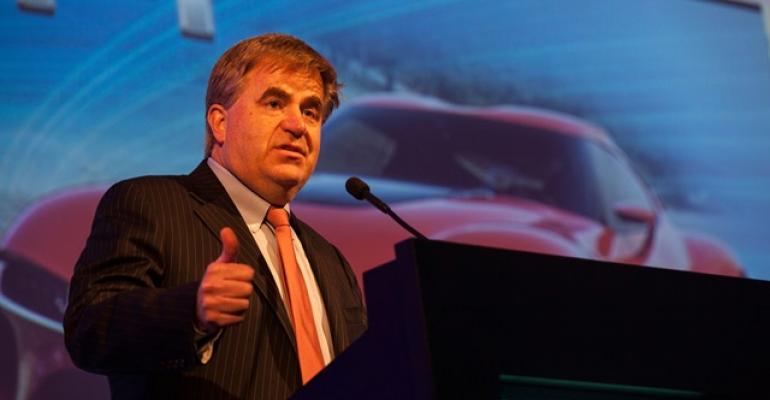NEW YORK – Truck demand has thrown the auto industry a bit of a curve, but it will recover, says a top Toyota official.
The U.S. sales mix has shifted to 56% light trucks as consumers have flocked to the growing availability of CUVs. The car/truck split was roughly 50/50 as recently as 2015.
That rapid movement caught automakers flatfooted, bloating inventories and triggering all-time-high incentives of $4,000 per vehicle at the end of last year, notes Bob Carter, executive vice president-sales for Toyota Motor North America.
The migration to trucks is expected to continue, he says at the NADA/J.D. Power Automotive Forum here, pointing to a forecast for 2018 calling for trucks to account for 64% of U.S. sales.
To that end, key hourly shifts at Toyota’s U.S. assembly plants have been operating daily overtime and will work 46 Saturdays in 2017 in an effort to keep up with demand, Carter says.
“We would still like a few more (trucks),” he says. “But we’re in a better position than we were a couple years ago. We are readjusting our mix.”
More will be done to improve the pipeline flow, Carter says, noting Toyota plans to invest $10 billion in the U.S. over the next five years.
“A lot of that is to retool our plants to be more flexible,” he says.
Carter says industry incentives will come down once production is rebalanced to better align with demand.
“Our incentives are up for both brands, higher than ever experienced,” he says. “That mix change is driving most of that. Manufacturing bases are changing, but they were not set up to support that a year ago.
“So we have too many cars and probably the right number of trucks,” he adds. “Once we get pipelines lined up to consumer demand, I think we’ll see incentives (come down).”
Overall Toyota is forecasting a market of about 17.1 million new vehicles in 2017, and Carter says even the worst projections he’s seen still call for a healthy 16.7 million-unit demand.
“I do believe the industry is over the top,” he says. “But it doesn’t mean we’re on a sled ride from here. We’ll have to tighten our belts a little bit more, but…it’s going to be fine.”
Meanwhile, Carter calls on dealers here to join with automakers in opposing the proposed border-adjustment tax that could levy a 20% tariff on all imported goods and push car prices up $2,000-$3,000 by some estimates.
Toyota has been lobbying Congress to reject the BAT proposal, and Carter says most members are “beginning to understand. But for those of us who know how Washington works, it would be a mistake to let up on the pressure. Dealers, suppliers and automakers have to be on the same team and fight this proposal.”
[email protected] @David Zoia





